Time flies when you’re having fun and it’s been almost 4 years since I shared any of Charles Selberg’s Instructional Film Loop series, so let’s dive back in! Since it has been so long, here’s a little review of just what in the world I’m talking about. The late 1960’s, early 1970’s did not have home video. I know, I know. Take a minute. It’s hard to fathom from the perspective of today’s ubiquitous media onslaught. It was a time of 16mm projectors, film strips and 35mm slides. You know, ancient history. Charlie Selberg, during his years in Fargo, ND, worked for a film producer named Bill Snyder. I’ve no idea what odd jobs he took on for Snyder, but I believe he at least did graphics and signage for film titles. Charlie had an MFA from San Francisco State and did sign painting for friends.
Charlie Selberg on top of a ladder painting the sign on the facade of the Freedom Fencers Club, located in Freedom, California. John McDougall founded this club around 1976 and later turned it over to Len Carnighan. This was my first club and I learned a lot of lessons on the 2×6 oak planking and cement floors inside this old hay and feed barn.
By 1970, Charlie had been teaching at the University of California Santa Cruz for about 5 years and had just competed in the World Masters Fencing Championships in London, helping win gold in the team foil. He was looking for a way to use media to reach a larger audience for his style of instruction and hit upon the idea of using a technology known as a film loop.
The film loop cartridge. Manufactured by Technicolor and played on a small, seemingly indestructible projector, the cartridge worked like an 8-track cartridge. It played in a loop with the beginning and end of the film spliced together. You could start and stop, but not fast-forward or rewind. I had a film-savvy former co-worker friend carefully take all twenty of these cartridges apart, transfer the film to digital files and reassemble the cartridges. They still play great, too!
The film loops didn’t have an audio track, just one of their drawbacks, so Charlie created a syllabus that accompanied each of his twenty lessons. By the way, this box of film loops was donated to the Archive by Matthew Porter of American Fencers Supply, one of the earliest donations I picked up. In earlier posts, I’ve put up lessons 1 through 5, so let’s jump in with Lesson 6: Parries!
The syllabus was for the instructor’s use as a teaching aid in running the program and spells out what is covered in the clip and how to contextualize the lesson for the students.
Ok, now that you know what to look for, here’s the footage for Lesson 6!
What would fencing be without practice?
Let’s keep going! Loop #7 takes you through the high line parries & ripostes. Below is the complete syllabus for this lesson, followed by the video.
Finally, Loop #8, where we learn about low line parries & ripostes. For some reason, this lesson doesn’t require any practice. I’m not sure how I feel about that. The syllabus moves right on to Loop #9. I guess you were just supposed to figure it out at that stage of the game. I mean, the way this worked, an instructor would purchase the series (and a projector, if they didn’t have one) and use it to direct the activities of their fencer(s). If they’d gotten this far, maybe Charlie assumed that users of this series could or should have figured out their role in this well enough to go on with business as usual. Then again, since I was initially trained by someone who was a Selberg student, maybe that explains why my low-line parries have often been a gaping hole in my defense. Don’t spread that around.
And that’ll do it for today! Good to dip my toe into Final Cut again. I need more practice. I’ll see what else I can find for next week!

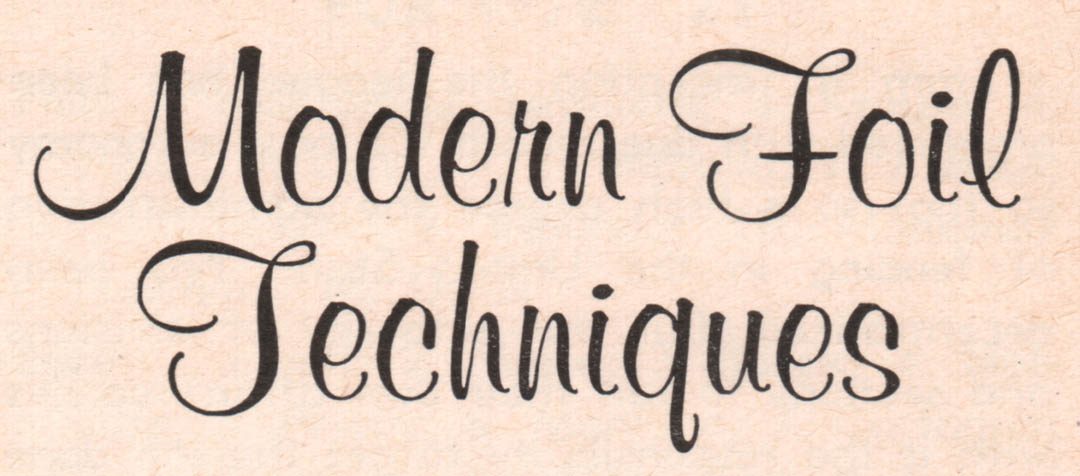
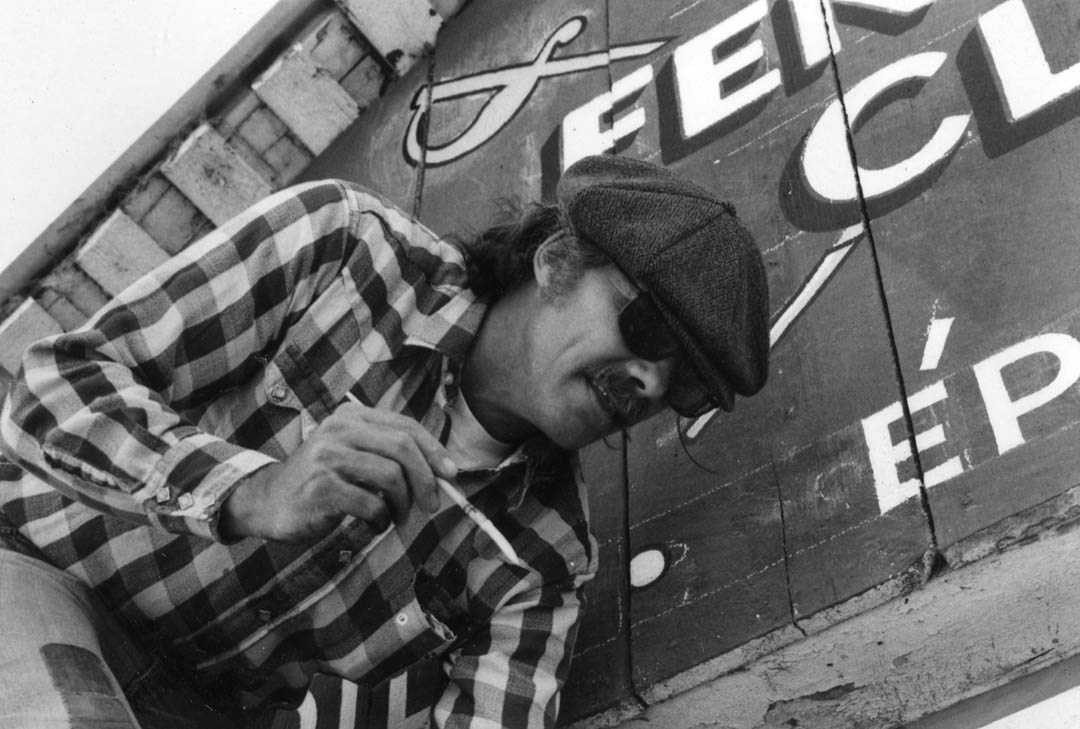

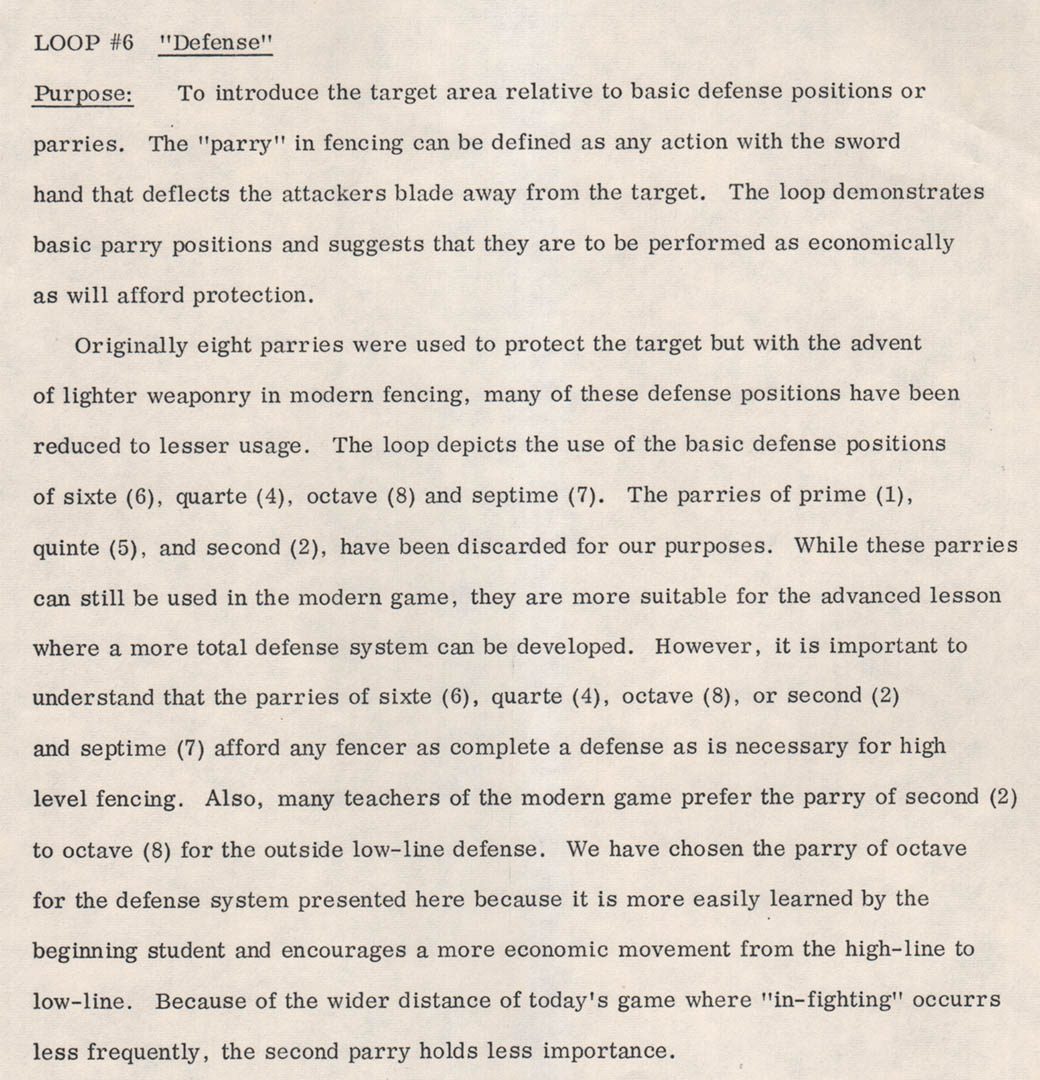
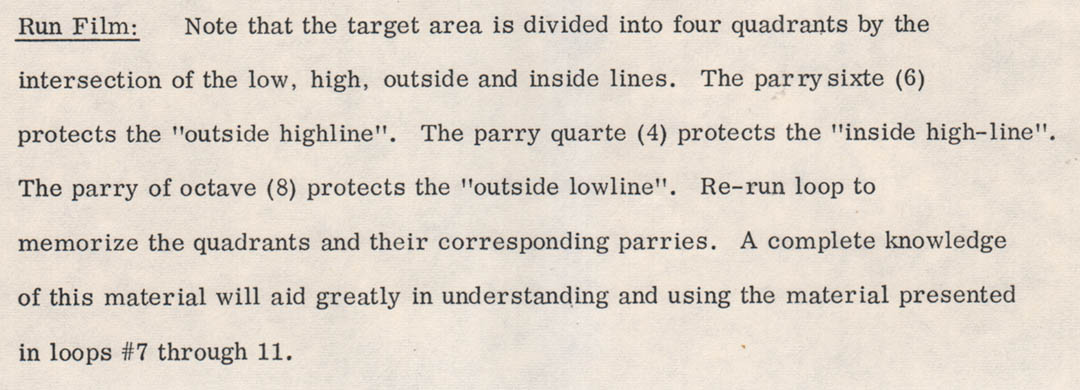
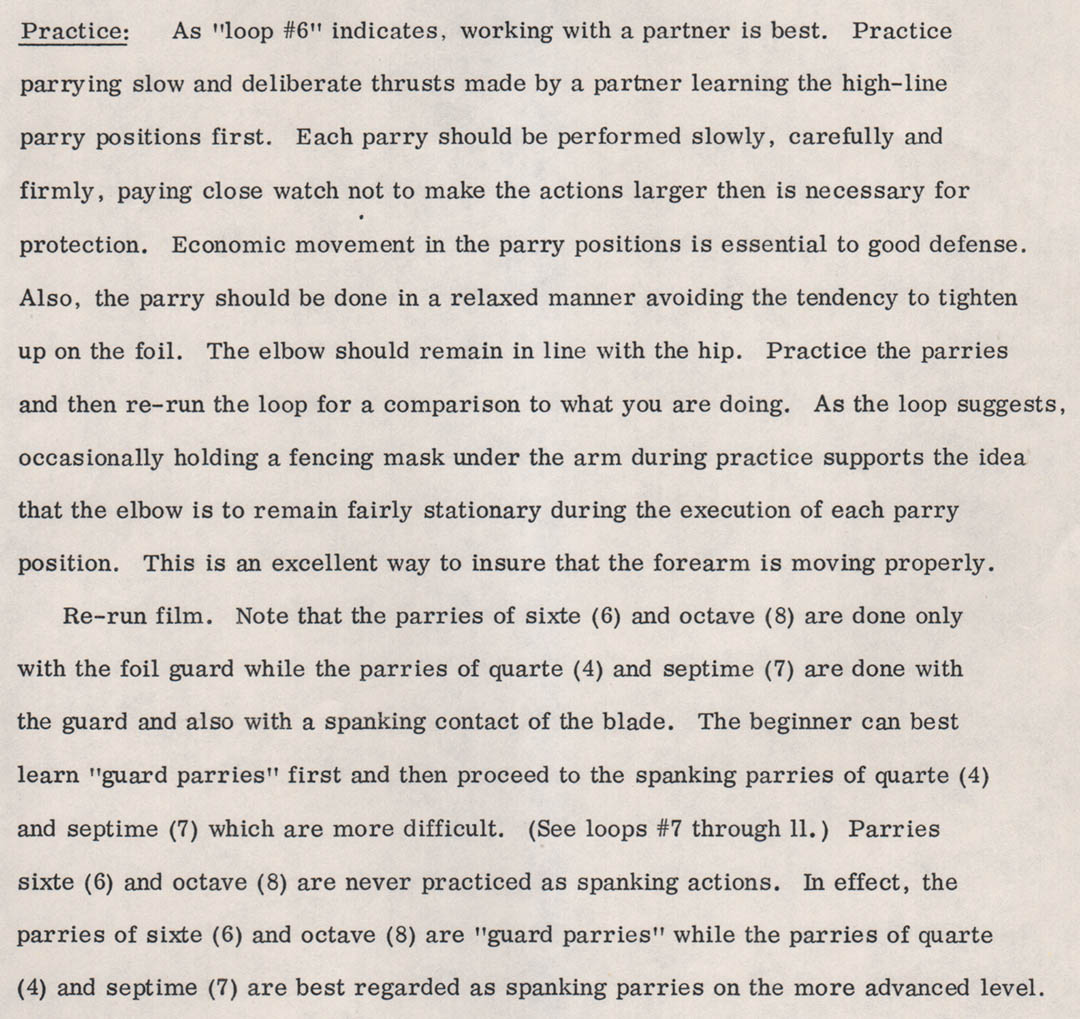
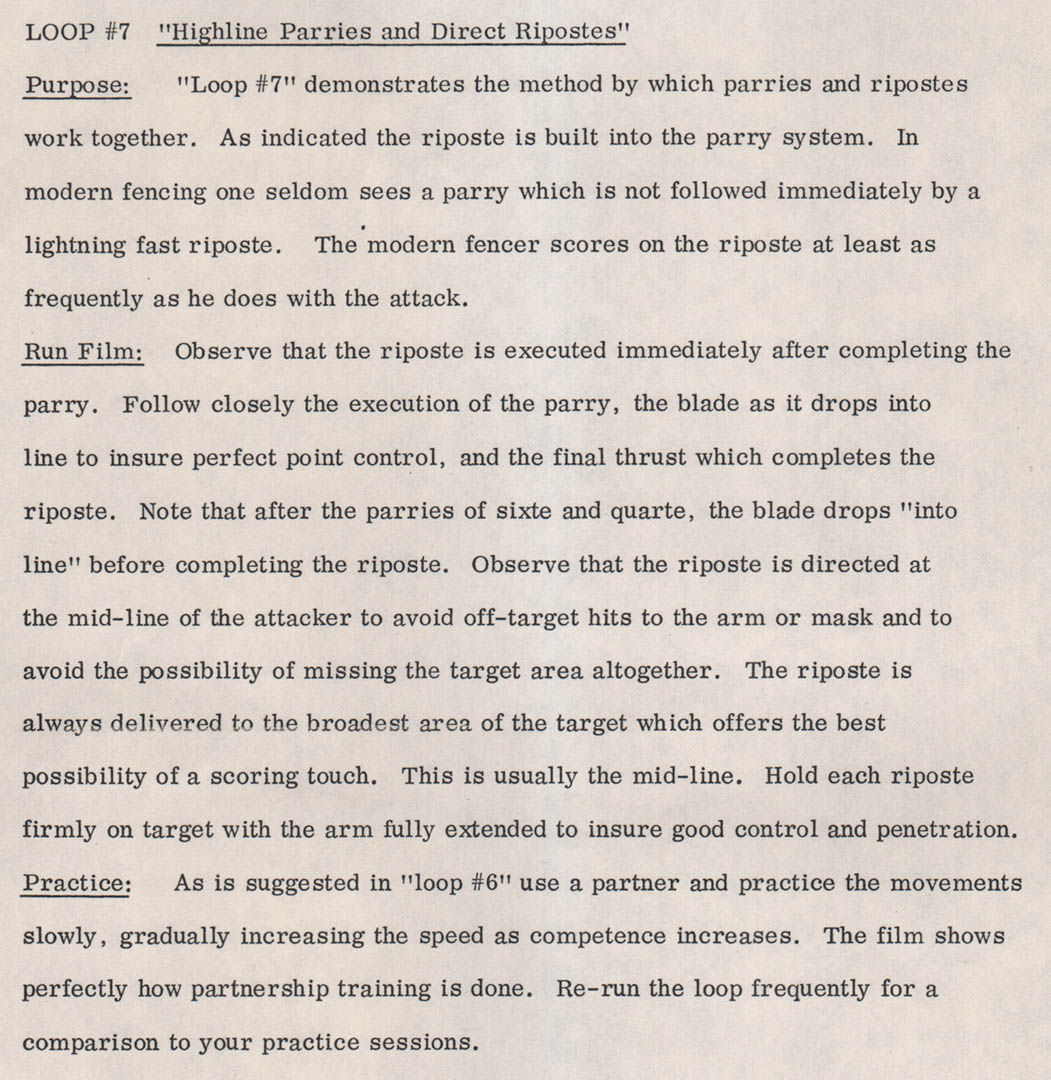
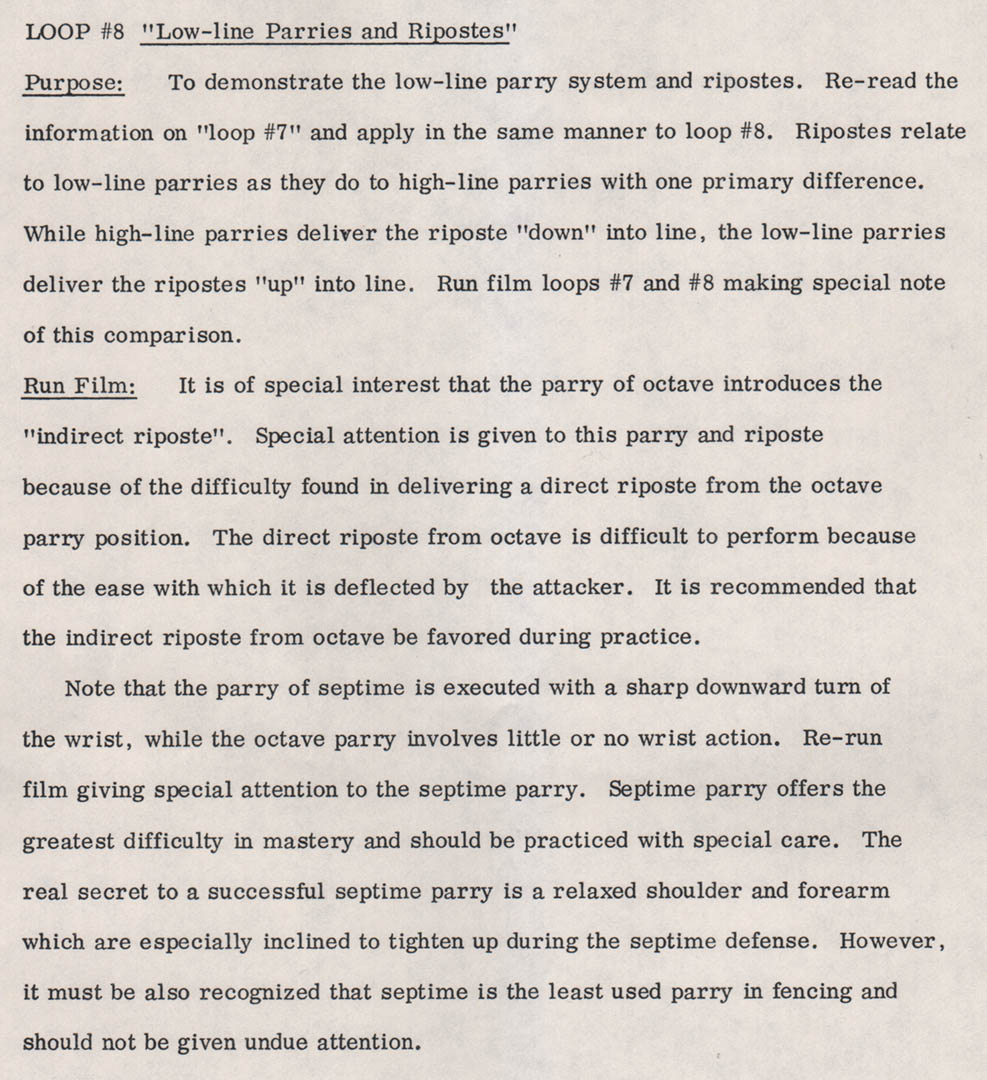
Trackbacks/Pingbacks